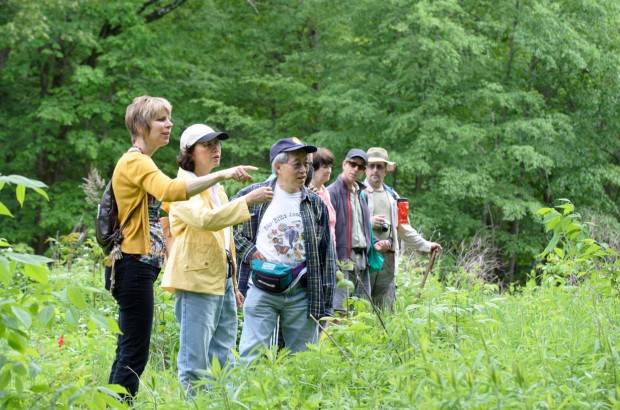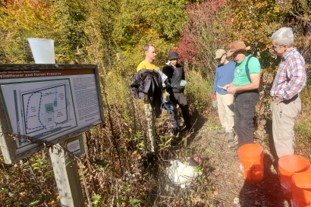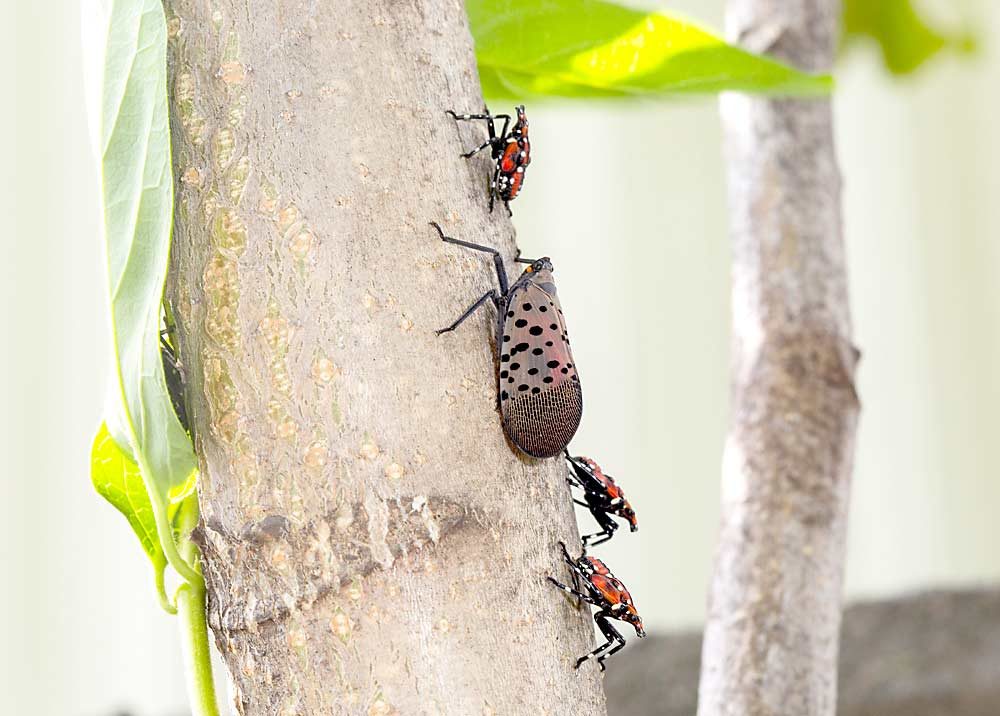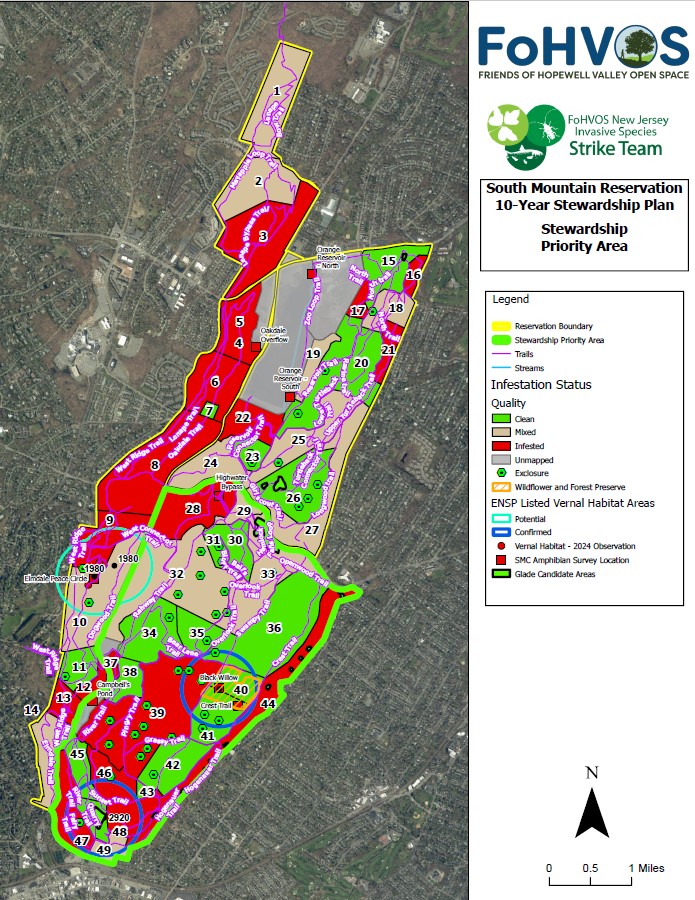Stewardship of the reservation, both its infrastructure and ecology, is fundamental to the Conservancy’s mission. We expend thousands of volunteer hours and tens of thousands of dollars each year in support of these areas.
For infrastructure maintenance and improvement, the hardscape, the Conservancy has multiple volunteer programs: Trailkeepers, Trail Work Crew, Chainsaw Gang, and Trash Tacklers. We also oversee several Scout projects each year to improve our trail system, update our comprehensive signage system, remove graffiti, and repair forest regeneration site fencing,
Environmental stewardship to maintain and improve the reservation’s ecology, the softscape, represents our greatest expenditure of funds each year through paid summer internships and our recently launched ten-year Forest Stewardship Initiative (see below).
The 14-acre Wildflower and Forest Preserve, surrounding the Dog Park, and 41 other, smaller regeneration sites/deer exclosures spread throughout the reservation, are the key components of a 20+ year program started in 2008 to restore the forest understory and ecology. (The smaller sites are not open to the general public, though some are maintained by community groups through our Adopt-a-Site program.) These protected areas, one million square feet or around one percent of the reservation, protect native plants from being over-browsed by the excessive deer population. In addition to its role in forest restoration, the Preserve serves as a destination to educate and engage people of all ages. With a simple trail system and informative signage, visitors may learn about woodland, vernal pond, and meadow ecosystems.
Complementing these ecology programs are Citizen Science initiatives that monitor frog and toad populations and have created and maintain a one-acre pollinator meadow near Shady Nook.
Volunteers of all ages and abilities form the backbone of the Conservancy and our community is indebted to the thousands of volunteer hours contributed each year. Some of these efforts are captured in this short video. As our stewardship programs have expanded over the decades, we are always looking to individual volunteers and community groups to help ensure the reservation remains a special place for residents of Essex County and the region now and into the future.

Tricia Zimic, at left, first Forest Regen Coordinator at Preserve Meadow

Ten-Year Forest Stewardship Initiative
In 2025, the South Mountain Conservancy launched a multifaceted, ten-year Forest Stewardship Initiative (FSI) to improve the forest ecology of the South Mountain Reservation. This initiative encompasses and complements the two other current Conservancy plant ecology programs. The first of these is the Forest Regeneration Corps, started in 2008, that maintains (through volunteers and paid summer interns) the 14-acre Wildflower and Forest Preserve and many of the 41 smaller forest regeneration sites. The second is the Citizen Science program that is creating a one-acre Pollinator Meadow near Shady Nook. Ground preparation began in the spring of 2023 with tilling and the application of 44,000 square feet of solarizing plastic. Eighteen months later, the plastic was removed and the ground seeded with a carefully selected blend of native plants. The installation of deer-resistant fencing is planned for 2025.
The Forest Stewardship Initiative goes further and will implement, as funding allows, a comprehensive, ten-year plan to manage/eradicate emerging invasive plants throughout our 2,110-acre park. This plan is based on a $11k study in 2024, funded by the Conservancy, by the NJ Invasive Species Strike Team (NJISST) under the direction of forest ecologist Michael Van Clef, PhD. Funding this plan will require raising approximately $20,000 each year for the next decade (with the anticipated support of the County Parks Dept.) for professionals to eradicate non-native plants which have not yet established a significant foothold in the reservation. It will also require a concerted effort to engage community groups from neighboring towns as the plan estimates that an additional 380 hours of volunteer effort annually will be needed. This is roughly equal to the effort currently expended in our other two ecology programs, so it will be a big challenge.
The foundation for this effort is the continuing, and crucial, annual deer management program that has been run by the County since 2008. According to the NJISST study and the County’s own expert, Dan Bernier, lowering the white-tailed deer density to 20 per square mile or less is fundamental for all other efforts to succeed. In 2008, when the deer management program began, the reservation’s deer population exceeded 80 per square mile and the understory was ravaged from over-browsing. Today, the density is around 20 per square mile and the understory is slowly recovering. We thank the County for its ongoing commitment to this important work which enlists many of its personnel and costs about $60k per year for our reservation.
The Conservancy itself is seeking grants to support the FSI and anticipates working with the County to gain its financial support. Our goal is to take forest stewardship to the next level by removing emerging invasive plants, by cultivating native seed sources in our regeneration sites, and by encouraging pollinators of all types. In this way the reservation’s canopy can grow and thrive for succeeding generations. To make this a reality, a new Forest Stewardship Fund has been set up for donations to this cause. Please support this long-term stewardship initiative.
----------------------------------
From report (pp. 6-7):
Overview of Invasive Species Management - The underlying philosophical context for invasive species management is the obligation to counteract negative human impacts on natural systems, which is often referred to as “stewardship”. The guiding principle of stewardship is fostering health of native plant communities that support our flora and fauna, which is indirectly accomplished through the management of invasive species. Management of invasive species is achieved through targeted control measures that minimize, but do not eradicate, particular invasive species. Eradication within pre-defined boundaries should only be considered a valid goal when populations are relatively small, and the threat of continued spread is significant.
Spotted Lanternfly

The spotted lanternfly has spread throughout New Jersey and is in the South Mountain Reservation. Learn more about this invasive pest and what the Conservancy is doing to combat it.

